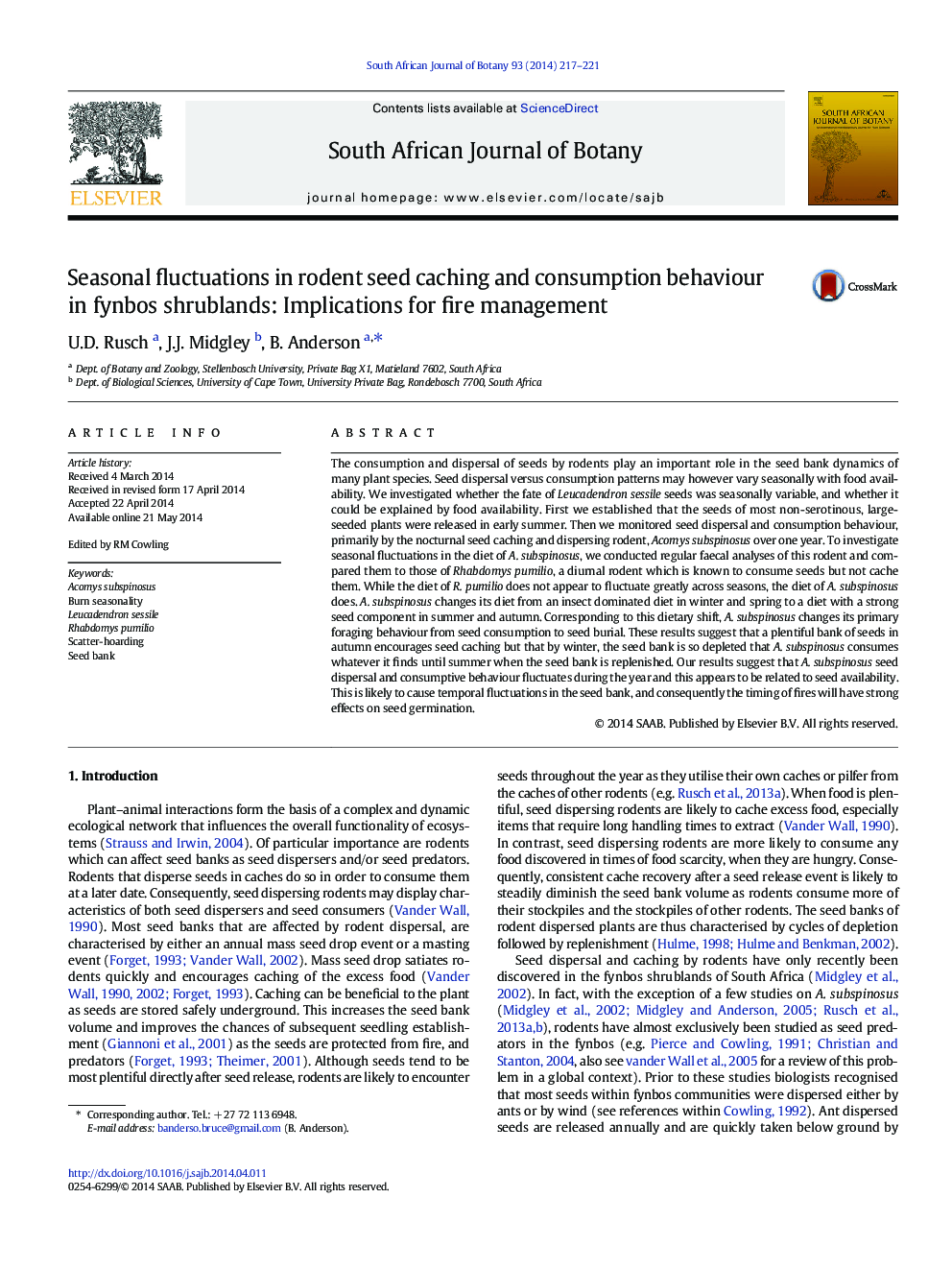| Article ID | Journal | Published Year | Pages | File Type |
|---|---|---|---|---|
| 6378956 | South African Journal of Botany | 2014 | 5 Pages |
Abstract
The consumption and dispersal of seeds by rodents play an important role in the seed bank dynamics of many plant species. Seed dispersal versus consumption patterns may however vary seasonally with food availability. We investigated whether the fate of Leucadendron sessile seeds was seasonally variable, and whether it could be explained by food availability. First we established that the seeds of most non-serotinous, large-seeded plants were released in early summer. Then we monitored seed dispersal and consumption behaviour, primarily by the nocturnal seed caching and dispersing rodent, Acomys subspinosus over one year. To investigate seasonal fluctuations in the diet of A. subspinosus, we conducted regular faecal analyses of this rodent and compared them to those of Rhabdomys pumilio, a diurnal rodent which is known to consume seeds but not cache them. While the diet of R. pumilio does not appear to fluctuate greatly across seasons, the diet of A. subspinosus does. A. subspinosus changes its diet from an insect dominated diet in winter and spring to a diet with a strong seed component in summer and autumn. Corresponding to this dietary shift, A. subspinosus changes its primary foraging behaviour from seed consumption to seed burial. These results suggest that a plentiful bank of seeds in autumn encourages seed caching but that by winter, the seed bank is so depleted that A. subspinosus consumes whatever it finds until summer when the seed bank is replenished. Our results suggest that A. subspinosus seed dispersal and consumptive behaviour fluctuates during the year and this appears to be related to seed availability. This is likely to cause temporal fluctuations in the seed bank, and consequently the timing of fires will have strong effects on seed germination.
Related Topics
Life Sciences
Agricultural and Biological Sciences
Agronomy and Crop Science
Authors
U.D. Rusch, J.J. Midgley, B. Anderson,
